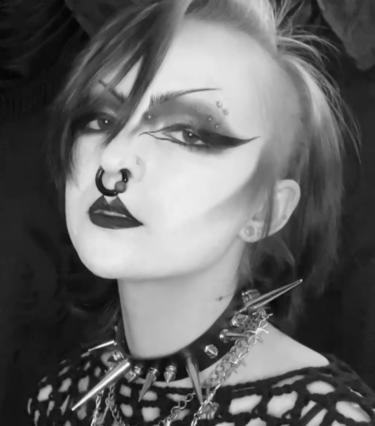Author: Vex Pizzi
Advisor: Prof. Kira Hall, TA Ayden Parish
Course: LING 1000: Language in US Society
Semester: Fall 2022
LURA 2023
Can a person naturally have multiple distinct accents? Dissociative identity disorder (DID) is a condition in which multiple different identity states coexist in the same individual and have their own sets of memory and distinct behavioral patterns. The identity states are commonly referred to as “alters,” and the individual with the disorder, who often identifies as a collective of alters rather than a singular person, is commonly referred to as a “system.” The amount of research being conducted on the disorder has increased more and more over the decades, and it seems there is much more awareness of it now among the general public than there ever has been. Considering the complex nature of the disorder, there could be many different related topics for researchers to look into, but one point of interest may be behavioral differences between alters. Even more specifically, one particularly interesting subject matter could be the differences in speech patterns of alters.
Examining how one individual can naturally have multiple different manners of speaking may open doors to learn about language acquisition from a young age and how environments can continue shaping the way that people speak throughout their lives. There is a lot more to be said than what is brushed on in the paper I wrote for LING 1000 (Language in US Society), especially because it is an individual case study, but it may open some minds to the subject.
The individual case study is an analysis of three alters’ speech patterns. Each recorded themself reading a portion of the same passage, titled “The Rainbow Passage.” This passage was chosen because it is often used for linguistic analysis because it includes every sound of the English language. Here is the portion of that passage that was transcribed in the research paper:
When the sunlight strikes raindrops in the air, they act as a prism and form a rainbow. The rainbow is a division of white light into many beautiful colors. These take the shape of a long round arch, with its path high above, and its two ends apparently beyond the horizon. There is , according to legend, a boiling pot of gold at one end. People look, but no one ever finds it. When a man looks for something beyond his reach, his friends say he is looking for the pot of gold at the end of the rainbow. Throughout the centuries people have explained the rainbow in various ways. Some have accepted it as a miracle without physical explanation.
The average English speaker would likely recognize each of the alters’ ways of speaking as regional accents. One is clearly some form of an American accent, another is close to a British accent, and the other mostly sounds like a Scottish accent. Each of the three had unique vowel sounds and patterns, but they also occasionally had similarities that did not necessarily sound as if they were slipping into American accents, but more so as if they were using American pronunciations of some words while still holding on to their unique vowel sounds. For example, the alter that has the Scottish sounding accent pronounced the word “rainbow” as /ɹeɪnbʊ/ sometimes and /ɾeɪnbʊ/ other times, with the latter being more typically Scottish sounding because of the tapped /ɾ/ at the beginning and the former being slightly more American sounding because of the approximant /ɹ/ sound.
Some specific words from this passage that were interesting to compare between alters were “rainbow,” “form,” “boiling,” “sunlight,” “apparently,” and especially other words that contain diphthongs and “r” sounds. The differences in the ways these words were pronounced included the removal of diphthongs in one alter’s speech, the removal of /ɹ/ sounds in another, the number of times each of them added glottal stops into their words, and many noticeable changes between them in vowel pronunciation that even sometimes included unique vowel sounds.
The fact that these separate alters that exist within one body and brain can have so much speech variation is certainly something to be looked into further. Despite sharing one collective life and all of them being exposed to the same environment growing up, their speech still managed to diverge in this way as it developed. It may be worth reevaluating how individuals develop their speech patterns and accents as well as how they can continue being affected throughout their lives.
Header image credit: https://www.dialectsarchive.com/

 Vex is a sophomore studying Linguistics at CU Boulder. They gained their love of language from videos about polyglots online and wanted to speak as many languages as their favorite influencers did. Vex spends lots of their time caring for their pigeons, getting piercings, and scrolling endlessly on the internet.
Vex is a sophomore studying Linguistics at CU Boulder. They gained their love of language from videos about polyglots online and wanted to speak as many languages as their favorite influencers did. Vex spends lots of their time caring for their pigeons, getting piercings, and scrolling endlessly on the internet.